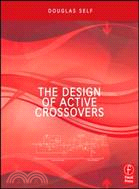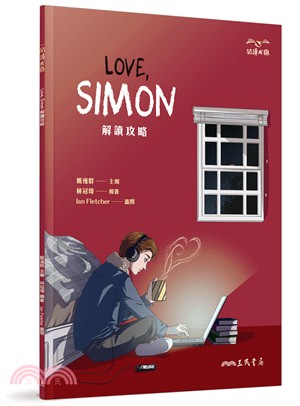The Design of Active Crossovers
商品資訊
ISBN13:9780240817385
出版社:Focal Pr
作者:Douglas Self
出版日:2011/05/01
裝訂/頁數:平裝/584頁
規格:22.9cm*19.1cm*3.2cm (高/寬/厚)
定價
:NT$ 2794 元優惠價
:90 折 2515 元
無庫存,下單後進貨(到貨天數約45-60天)
下單可得紅利積點:75 點
商品簡介
目次
相關商品
商品簡介
The Design of Active Crossovers is a unique guide to the design of high-quality circuitry for splitting audio frequencies into separate bands and directing them to different loudspeaker drive units specifically designed for handling their own range of frequencies. Traditionally this has been done by using passive crossover units built into the loudspeaker boxes; this is the simplest solution, but it is also a bundle of compromises. The high cost of passive crossover components, and the power losses in them, means that passive crossovers have to use relatively few parts. This limits how well the crossover can do its basic job.
Active crossovers, sometimes called electronic crossovers, tackle the problem in a much more sophisticated manner. The division of the audio into bands is performed at low signal levels, before the power amplifiers, where it can be done with much greater precision. Very sophisticated filtering and response-shaping networks can be built at comparatively low cost. Time-delay networks that compensate for phyical misalignments in speaker construction can be implemented easily; the equivalent in a passive crossover is impractical because of the large cost and the heavy signal losses. Active crossover technology is also directly applicable to other band-splitting signal-processing devices such as multi-band compressors.
The use of active crossovers is increasing. They are used by almost every sound reinforcement system, by almost every recording studio monitoring set-up, and to a small but growing extent in domestic hifi. There is a growing acceptance in the hifi industry that multi-amplification using active crossovers is the obvious next step (and possibly the last big one) to getting the best possible sound. There is also a large usage of active crossovers in car audio, with the emphasis on routing the bass to enormous low-frequency loudspeakers.
One of the very few drawbacks to using the active crossover approach is that it requires more power amplifiers; these have often been built into the loudspeaker, along with the crossover, and this deprives the customer of the chance to choose their own amplifier, leading to resistance to the whole active crossover philosophy. A comprehensive proposal for solving this problem is an important part of this book.
The design of active crossovers is closely linked with that of the loudspeakers they drive. A chapter gives a concise but complete account of all the loudspeaker design issues that affect the associated active crossover.
This book is packed full of valuable information, with virtually every page revealing nuggets of specialized knowledge never before published. Essential points of theory bearing on practical performance are lucidly and thoroughly explained, with the mathematics kept to an essential minimum. Douglas' background in design for manufacture ensures he keeps a wary eye on the cost of things.
Features:
Crossover basics and requirements
The many different crossover types and how they work
Design almost any kind of active filter with minimal mathematics
Make crossover filters with very low noise and distortion
Make high-performance time-delay filters that give a constant delay over a wide range of frequency
Make a wide variety of audio equaliser stages: shelving, peaking and notch characteristics
All about active crossover system design for optimal noise and dynamic range
There is a large amount of new material that has never been published before. A few examples: using capacitance multipliers in biquad equalisers, opamp output biasing to reduce distortion, the design of NTMTM notch crossovers, the design of special filters for filler-driver crossovers, the use of mixed capacitors to reduce filter distortion, differentially elevated internal levels to reduce noise, and so on.
Douglas wears his learning lightly, and this book features the engaging prose style familiar from his other books The Audio Power Amplifier Design Handbook, Self on Audio, and the recent Small Signal Audio Design.
Active crossovers, sometimes called electronic crossovers, tackle the problem in a much more sophisticated manner. The division of the audio into bands is performed at low signal levels, before the power amplifiers, where it can be done with much greater precision. Very sophisticated filtering and response-shaping networks can be built at comparatively low cost. Time-delay networks that compensate for phyical misalignments in speaker construction can be implemented easily; the equivalent in a passive crossover is impractical because of the large cost and the heavy signal losses. Active crossover technology is also directly applicable to other band-splitting signal-processing devices such as multi-band compressors.
The use of active crossovers is increasing. They are used by almost every sound reinforcement system, by almost every recording studio monitoring set-up, and to a small but growing extent in domestic hifi. There is a growing acceptance in the hifi industry that multi-amplification using active crossovers is the obvious next step (and possibly the last big one) to getting the best possible sound. There is also a large usage of active crossovers in car audio, with the emphasis on routing the bass to enormous low-frequency loudspeakers.
One of the very few drawbacks to using the active crossover approach is that it requires more power amplifiers; these have often been built into the loudspeaker, along with the crossover, and this deprives the customer of the chance to choose their own amplifier, leading to resistance to the whole active crossover philosophy. A comprehensive proposal for solving this problem is an important part of this book.
The design of active crossovers is closely linked with that of the loudspeakers they drive. A chapter gives a concise but complete account of all the loudspeaker design issues that affect the associated active crossover.
This book is packed full of valuable information, with virtually every page revealing nuggets of specialized knowledge never before published. Essential points of theory bearing on practical performance are lucidly and thoroughly explained, with the mathematics kept to an essential minimum. Douglas' background in design for manufacture ensures he keeps a wary eye on the cost of things.
Features:
Crossover basics and requirements
The many different crossover types and how they work
Design almost any kind of active filter with minimal mathematics
Make crossover filters with very low noise and distortion
Make high-performance time-delay filters that give a constant delay over a wide range of frequency
Make a wide variety of audio equaliser stages: shelving, peaking and notch characteristics
All about active crossover system design for optimal noise and dynamic range
There is a large amount of new material that has never been published before. A few examples: using capacitance multipliers in biquad equalisers, opamp output biasing to reduce distortion, the design of NTMTM notch crossovers, the design of special filters for filler-driver crossovers, the use of mixed capacitors to reduce filter distortion, differentially elevated internal levels to reduce noise, and so on.
Douglas wears his learning lightly, and this book features the engaging prose style familiar from his other books The Audio Power Amplifier Design Handbook, Self on Audio, and the recent Small Signal Audio Design.
目次
Chapter 1: Crossover BasicsChapter 2: How Loudspeakers WorkChapter 3: Crossover RequirementsChapter 4: Crossover TypesChapter 5: Notch CrossoversChapter 6: Subtractive CrossoversChapter 7: Lowpass & Highpass Filter CharacteristicsChapter 8: Designing Lowpass & Highpass FiltersChapter 9: Bandpass & Notch FiltersChapter 10: Time Domain FiltersChapter 11: EqualisationChapter 12: Passive Components for Active CrossoversChapter 13: Opamps for Active CrossoversChapter 14: Active Crossover System DesignChapter 15: Subwoofer CrossoverChapter 16: Line Inputs and OutputsChapter 17: Line OutputsChapter 18: Power Supply DesignChapter 19: An Active Crossover DesignAppendix 1: Crossover Design ReferenceAppendix 2: Loudspeaker Design Reference
主題書展
更多
主題書展
更多書展今日66折
您曾經瀏覽過的商品
購物須知
外文書商品之書封,為出版社提供之樣本。實際出貨商品,以出版社所提供之現有版本為主。部份書籍,因出版社供應狀況特殊,匯率將依實際狀況做調整。
無庫存之商品,在您完成訂單程序之後,將以空運的方式為你下單調貨。為了縮短等待的時間,建議您將外文書與其他商品分開下單,以獲得最快的取貨速度,平均調貨時間為1~2個月。
為了保護您的權益,「三民網路書店」提供會員七日商品鑑賞期(收到商品為起始日)。
若要辦理退貨,請在商品鑑賞期內寄回,且商品必須是全新狀態與完整包裝(商品、附件、發票、隨貨贈品等)否則恕不接受退貨。
























